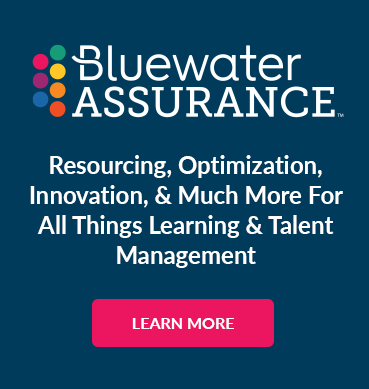6 Tips for Building a Company-Wide Content Plan
by Jenny Campbell | April 23, 2019 02:01 PM | Shark Bites - Cornerstone Edition

So you need to build a content plan. Now what? First, know that this is an investment in your employees and your customers, and it requires a big-picture plan for success. Before you decide to purchase or create any specific pieces of content or spend a dime on a content library, take a step back and assess the needs of your business as a whole. Your content plan will have the best results when tied to the overall business drivers.
In order to have an effective content plan, there are several factors you must consider. Here are six tips to help you build a comprehensive company-wide content plan.
1. Identify Content Needs Across Your Organization
In order to identify your content needs, you should take an inventory of what content is currently being used. This will help align all departments' needs and business objectives.
- What type of content is being used?
- How is it delivered?
- Who is managing and tracking the content?
2. Determine Similarities and Differences Among Audiences Needs
Determining the similarities and differences among audiences can save you money by uncovering departments with similar goals for learning. There might be shared resources that multiple audiences can use. For example:
- Can a customer-facing program also be used for onboarding or sales?
- Do the audiences need to receive the training in the same way? Mobile, desktop, classroom, observation/checklists-on the job, etc.
3. Establish Priorities and Timelines for Content Offerings per Audiences
Not all content is the same. Some curricula should be prioritized due to learning objectives and timelines. Some curriculum is customized and will have longer development times. In order to determine what curriculum is most important, there are a few questions you should ask yourself.
- Which training has the highest priority for the business?
- Which training is essential for employee enablement and retention?
- Which training is tied to professional development for succession?
4. Decide Your Approach to Learning and Types of Content per Audience
Some employees and customers will only consume learning during specific times and locations. Manufacturing and roles that don’t have a lot of desk time will need consideration for learning times and location. Learning may need to be created as audio, video, eLearning, classroom, reading and 1:1 learning depending on the role and the needs of the learners.
- What is the best way to reach your customers with the training? Mobile, Desktop, Classroom?
- Which internal audiences are best served with ILT (group) vs self-paced learning vs 1:1 coaching?
- What is needed for follow-up and continued learning per audience?
5. Create and Deliver Specific Learning Materials
Once all the content is organized throughout the company – per department and per audience, business outcomes can be aligned, and budgets assigned. Content creation options should be matched to timelines, approach, type of content, and budget. Some options for content creation include:
- Purchase from a third party
- Create new materials internally or with a partner vendor
- Modify/Update existing content
6. Feedback, Evaluation, and Improvement
Measuring learning content against the objectives and overall knowledge transfer allows for a continuous cycle of improvement. ROI with learning is hard to quantify but if your key performance indicators are focused and organized, you can build in the measurement and effectiveness from the beginning.
- Does the learning make a difference for the Learner?
- Can they apply what they learned?
- Has the learning helped to further the overall business outcomes?
The success of your training is dependent on your awareness of the state of your content and the current and future needs of your company. From there, you can build a company-wide content plan that benefits your learners and enriches your organization. It’s all about the data!
Bluewater offers a unique set of Content Services that help you improve the links among knowledge, learning, and individual and organizational performance both within and, importantly, beyond the Learning organization. Contact us to learn more!
Search Our Blogs
Categories
- Ad Hoc
- ADMIN
- administration
- AI
- analytics
- anxiety
- Artificial intelligence
- automation
- BI
- blog
- Blueprint
- center of excellence
- Communication
- COVID-19
- Culture
- Custom Content
- customer service
- Data
- Employee Engagement
- Shark Bites - Cornerstone Edition
- Shark Bites - SumTotal Edition
- Shark Bites - Ultimate Edition
- The Future of Learning
- The Future of Talent Management
- User Experience
- UX
- wellbeing

